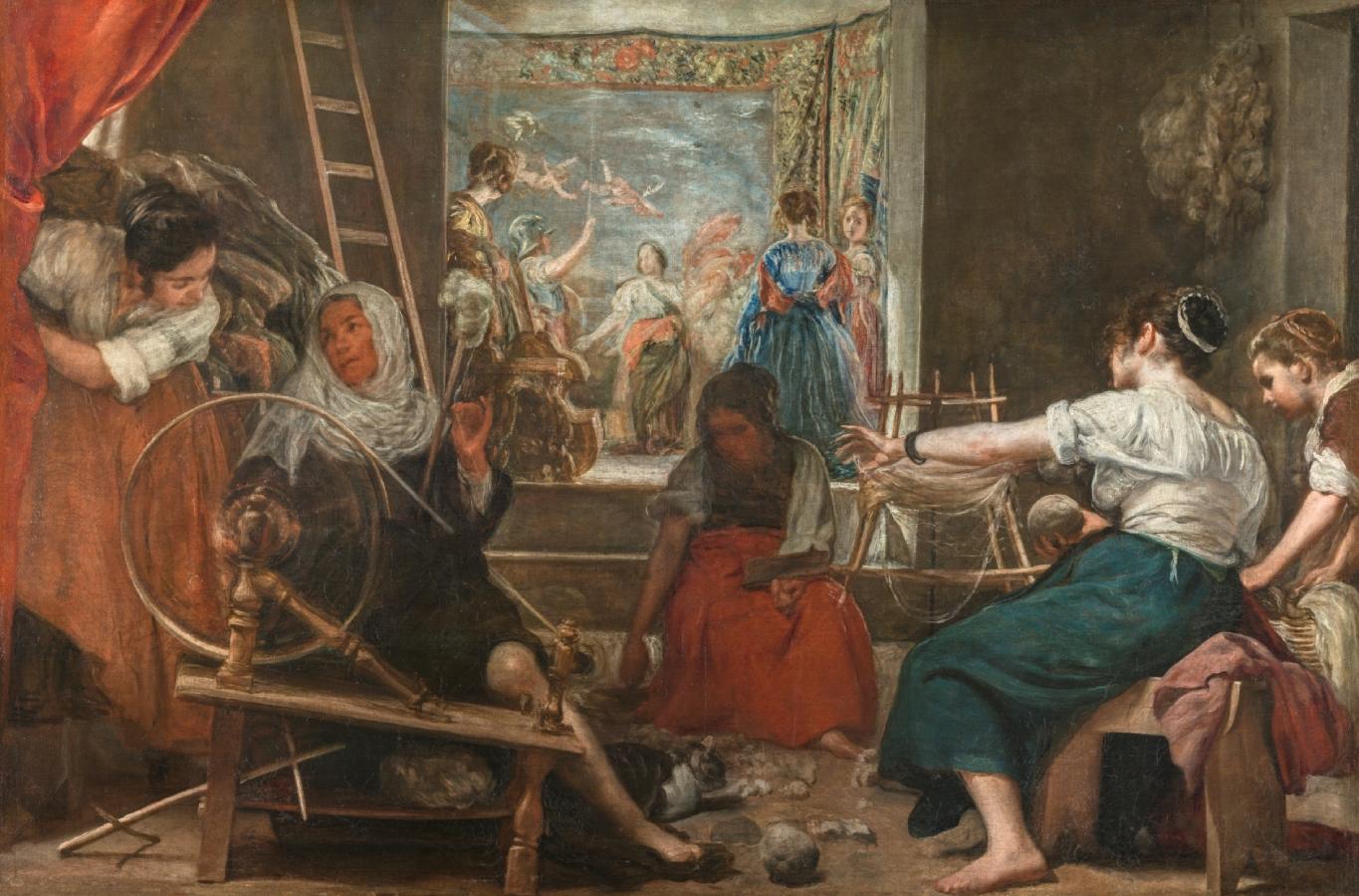Velázquez, Diego (1599-1660)
Las hilanderas, o La fábula de Aracne (The Spinners or The Fable of Arachne)
1655–1660
Oil on canvas, 220 x 289 cm
Museo del Prado, Madrid
This painting is the result of two acts carried out in different periods. First, Velázquez painted the surface occupied by the figures and the tapestry in the background. Later, in the 18th century, a wide strip (with the arch and oculus) was added to the top, along with narrower ones on the left, right and bottom (these additions are not visible in the current presentation of this work). Those alterations affected the reading of the work’s content, making what occurs in front of the tapestry appear farther away. Consequently, viewers have long seen it as a representation of an everyday scene in a tapestry workshop, with spinning activities represented by Velázquez in the foreground and ladies standing before a tapestry in the background. In the nineteen thirties and forties, various critics and historians expressed their belief that this apparently costumbrista work actually had a mythological content. The discovery of the inventory of Alcázar employee, Pedro de Arce’s property confirmed their suspicions. Drawn up in 1664, it lists a Fable of Arachne by Velázquez with dimensions quite close to those of this painting’s oldest fragment. There, the main elements of this mythological story are in the background, where the goddess, Pallas, wearing her helmet, argues with Arachne as the two compete to show their respective skills in the art of weaving. The tapestry behind them bears the image of The Rape of Europa that Titian painted for Philip II (now at the Isabella Stewart Gardner Museum in Boston), which Rubens also copied during his stay in Madrid in 1628–1629. This was one of the erotic stories of Pallas’ father, Jupiter, that Arachne had dared to weave, and it furnished Pallas with an excuse to turn her into a spider. The importance of the work and the number of figures, actions and objects depicted have all contributed to innumerable interpretations of this painting, as has Velázquez‘s indirect approach to the narrative, confining the main event to the small space in the background. Some critics have read a political content into this composition, seeing it as a warning against pride, while the fact that one of the painting’s main images is a tapestry, and moreover, a representation of a work by Titian, has also led to art-historical readings. In that sense, it has been observed that the work represents the passage from material (the process of weaving) to form (the tapestry) through the power of art, which would make this work a defense of the nobility of painting. Also, the perfect transmission of a sense of motion in the spinning wheel has led some authors to recall Pliny’s affirmation that one of the greatest accomplishments to which painting can aspire is the imitation of movement. Such interpretations are supported by the fact that Siglo de Oro mythologist Pérez de Moya (whose work was in Velázquez‘s library) interpreted the story of Arachne as a demonstration of the idea that art can always advance. Thus, through a mythological story whose key element is a tapestry that reproduces an original painting by Titian copied, in turn, by Rubens, Velázquez builds a narrative on artistic progress and competitiveness. This work appears to be from the final decade of Velázquez‘s career, around the same time as Las Meninas or Mercury and Argos, with which it has much in common. It is one of the artist’s most complex works, and it marks the culmination of his tendency to create compositions that are sophisticated and ambiguous in terms of both form and content, demanding the active participation of the viewer. (Fábulas de Velázquez. Mitología e Historia Sagrada en el Siglo de Oro / edición a cargo de Javier Portús Pérez, Madrid, Museo Nacional del Prado, 2007, p.337).
